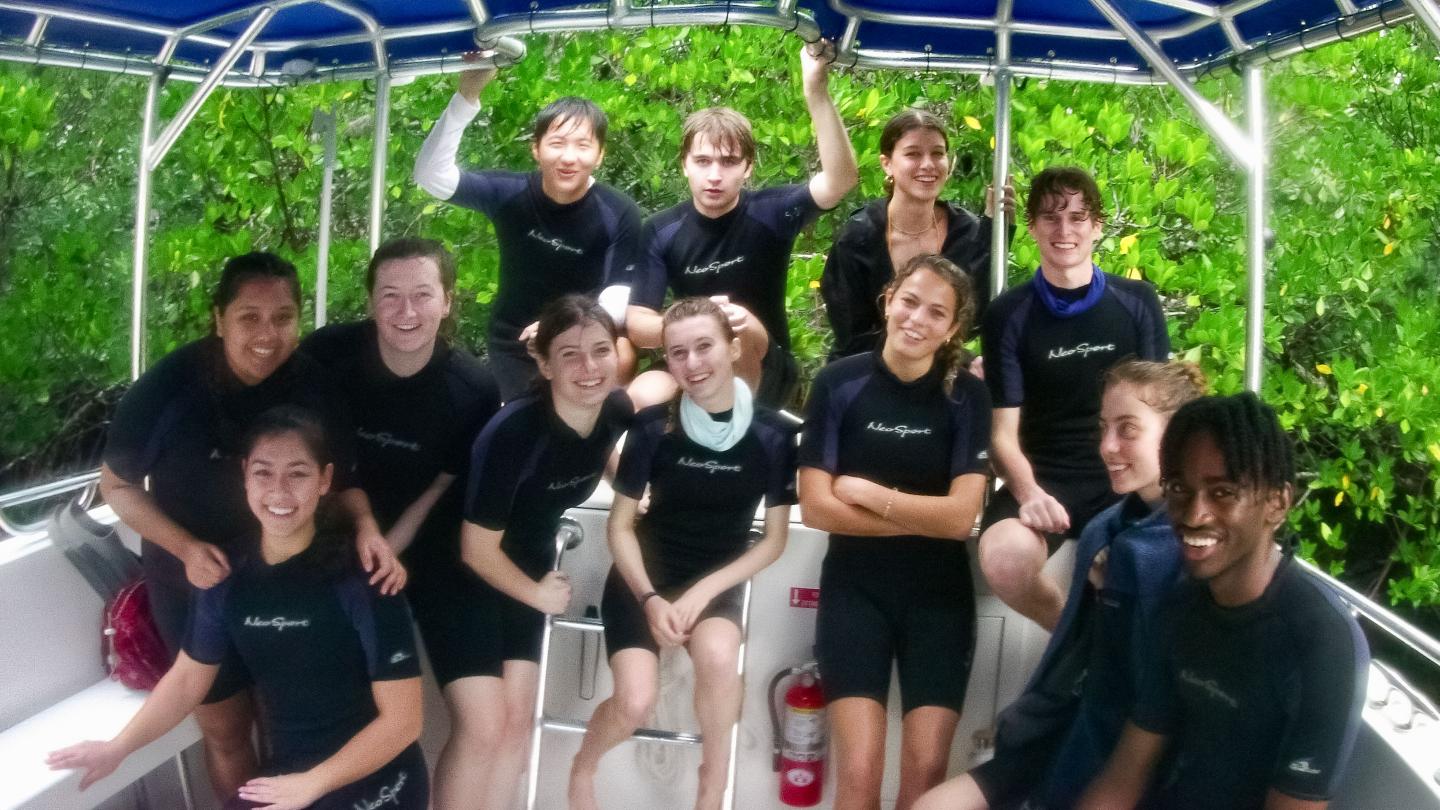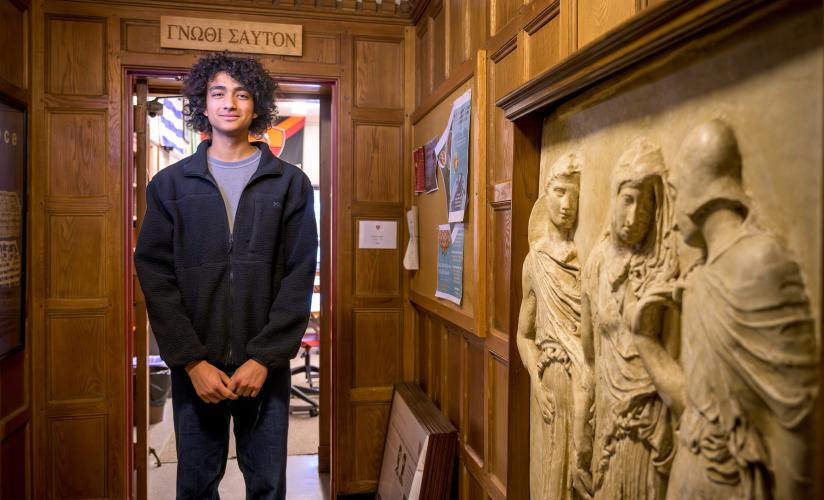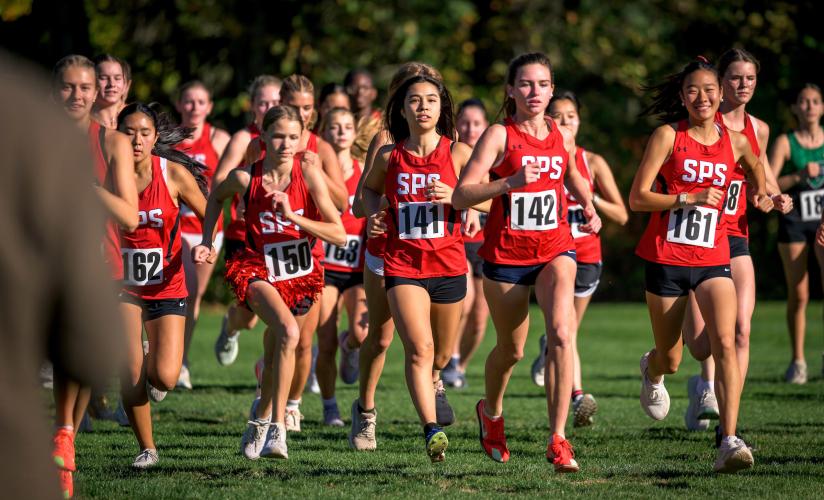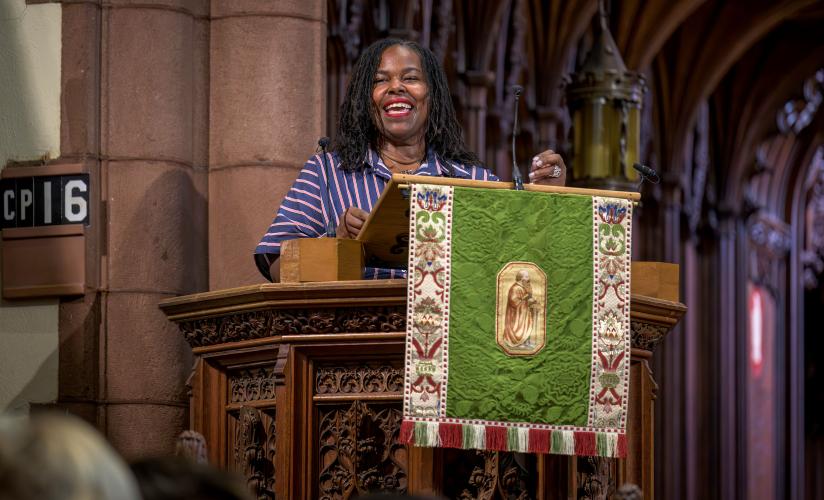

On a trip to Key Largo, students get an up-close look at sea life
BY JANA BROWN
As their friends made brief trips home or remained on the St. Paul’s School grounds for a few days of rest and relaxation, during Mid-winter Recess Feb. 3-6, a dozen Fifth and Sixth Formers went to school with bony fish, stingrays, mantis shrimp, upside-down jellyfish, sea turtles, manatees, barracuda and even a few non-predatory shark species. Members of Science Teacher Davies Cabot’s Marine Biology class, the students spent four days immersed in the living laboratory of Key Largo, Florida, putting to work the classroom knowledge they’d developed during a Winter Term unit focused on sea life in the open ocean.
Under the supervision of Cabot and first year Science Teacher KC Hambleton, the students explored coral reefs, mangroves and seagrass beds; studied water quality; and contemplated sea pollution by day. In the evenings, they ran labs to delve deeper into the ecology of marine organisms.
“They bring back to the classroom the energy and the enthusiasm of having experienced marine life in a natural habitat,” Cabot says of the trip’s mission, “because now they’ve actually looked at the subject live rather than what we do here, where we’re mostly looking at images.”
The Marine Biology off-campus program dates back more than two decades, with classes alternating excursions to Key Largo’s MarineLab with those to the Island School in the Bahamas, initially under the supervision of Cabot’s predecessor, Ellen Bryan. The 2023 trip marked the first time Cabot has been able to travel with students for the scientific mission since February 2020. Once in Florida, this year’s group settled into the dormitory on the MarineLab campus before embarking on a series of snorkeling tours around reefs and completing labs that examined topics from microplastics to invertebrate diversity and behavior.
Each day, students took samples from the water and then identified different types of phytoplankton and zooplankton under the microscope — a highlight, says Ella Raniolo ’23. During snorkeling excursions, they collected small seahorses to examine closer in the lab, and witnessed a nurse shark feeding in a mangrove from a few feet away. A highlight of the trip came on the final night, when, armed with glow sticks and flashlights, the group snorkeled in a lagoon to study nocturnal adaptations. For Ryan Doherty ’23, the chance to be immersed in a marine ecosystem was both exhilarating and educational.
“Being hands-on enhanced my perspective of marine life greatly,” says Doherty, whose personal favorite was the damselfish, which uses disruptive body coloration and a false eye on its caudal fin to dissuade predators. “It’s one thing to be learning about these marine animals in a classroom, but quite another to go out into the ocean and swim with them. I felt I had more to contribute to the class [when we came back] because I had seen many of those things in person.”
While engagement with sea life was a new experience for many of the students who went to Key Largo, Cabot regularly uses the ecosystem surrounding SPS grounds to deliver experiential learning. With the Fall Term dedicated to the study of freshwater systems, class members often spent lab periods outdoors, collecting plankton and macroinvertebrates, catching fish and taking water-quality samples from Lower School Pond.
“The differences are very dramatic,” Cabot says of the freshwater versus saltwater discoveries.
Cabot believes the most underrated part of the off-campus expedition is the camaraderie the students experience as they learn new things together. While not everyone elects to go, for those who do, he says, “it reinforces a lot of what we teach about already, but they also come back with an experience they can share with the other kids in the class.”



